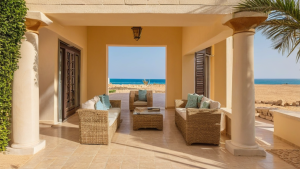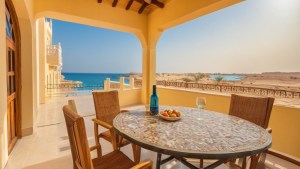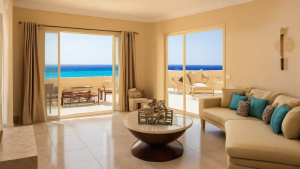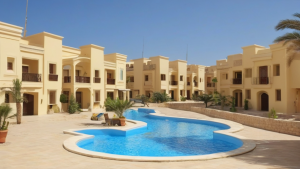Summary about owning and buying property in Hurghada, Egypt.
- How Construction Costs Directly Influence Final Property Prices in HurghadaThe Impact of Material and Labor Costs on Property Values.
- In Hurghada, fluctuations in the prices of these raw materials can quickly affect how much developers spend to complete projects.
- These climate considerations result in additional investment in energy-efficient materials and design features, which developers incorporate into the final property price.
- The materials and quality selected during construction have a direct impact on what you pay for property.
- Hurghada’s growing popularity as a tourist and investment destination influences building costs and property prices.
How construction costs directly influence final property prices in Hurghada
The impact of material and labor costs on property values
When you’re exploring real estate options in Hurghada, understanding how construction expenses shape final property prices is essential. The cost of building materials such as cement, steel, tiles, and wood significantly influences the overall investment required. In Hurghada, fluctuations in the prices of these raw materials can quickly affect how much developers spend to complete projects. If material costs rise due to supply chain disruptions or increased demand, developers typically pass these expenses onto buyers, raising asking prices for new homes and apartments.
Labor costs also play a crucial role. Skilled workers such as masons, electricians, and plumbers demand fair compensation. As the labor market tightens or standards increase, wages tend to go up in correlation. These rising wages add to the overall project budget, influencing developers’ pricing strategies. Thus, when construction workers’ pay grows, expect property prices in Hurghada to reflect that increase.
How location-specific challenges affect construction budgets
Building in Hurghada offers unique advantages, but also presents certain challenges that add to construction costs. For example, the city’s hot and arid climate requires special insulation and building materials to ensure comfort and durability. These climate considerations result in additional investment in energy-efficient materials and design features, which developers incorporate into the final property price.
Furthermore, proximity to the coast can increase foundation and structural costs because of salty air and soil conditions. Properties near the Red Sea may need enhanced corrosion-resistant materials, raising the construction budget. When these location-specific expenses add up, the increase is reflected in higher property prices.
Regulatory compliance and its cost implications
Hurghada’s local building regulations and safety standards also influence construction costs. Developers must adhere to zoning laws, environmental impact assessments, and construction codes. Meeting these requirements often necessitates additional permits, expert consultations, and compliance checks,all of which increase expenses before the first brick is laid.
For instance, projects near protected natural areas might require costly environmental mitigation measures. These regulatory hurdles add complexity and expense, making construction more expensive. Consequently, buyers see these costs reflected in the final price of Hurghada homes.
Design and quality choices: effects on pricing
The materials and quality selected during construction have a direct impact on what you pay for property. High-end finishes such as marble flooring, granite countertops, or premium lighting fixtures significantly add to building costs. While these choices enhance appeal and property value, they also push selling prices upward.
More affordable materials and simpler designs keep construction budgets low but might affect the property’s long-term value or resale potential. Developers often aim to balance cost with market demand to set final property prices that attract buyers while ensuring profitable margins.
The role of developer profit margins in final pricing
Besides direct construction costs, real estate developers include profit margins when pricing properties. These margins vary based on market competition and economic conditions in Hurghada. When construction costs rise, developers usually increase their selling prices to maintain profitability.
Developers assess trends in material costs, labor, and demand. If expenses accelerate rapidly, profit margins might be compressed unless property prices adjust accordingly. Buyers should recognize that rising property prices are often a combination of increased construction expenses and business profitability goals.
Supply chain and market demand influences
Hurghada’s growing popularity as a tourist and investment destination influences building costs and property prices. When demand for new housing surges, suppliers might raise prices for construction materials due to higher order volumes. At the same time, increased construction activity can strain availability of skilled labor.
These supply-side pressures cause overall project costs to climb. Developers react by increasing property prices to offset the heightened budget, especially when buyers remain eager to invest in Hurghada’s real estate market. Monitoring demand and supply trends is vital for understanding property price shifts.
How currency fluctuations impact construction and property costs
Since many construction materials and equipment in Hurghada are imported, exchange rates affect how much developers spend. A weaker Egyptian pound against major currencies means that imported goods become more expensive, raising construction costs. These shifts directly influence final property prices because development budgets expand with currency depreciation.
Buyers should be aware that external economic factors like currency changes can impact real estate prices indirectly through rising construction expenses. Keeping an eye on currency trends helps in predicting property price movements in Hurghada.
Strategies for buyers to navigate price fluctuations
As a prospective property buyer, understanding the link between construction costs and final prices empowers you to make smarter decisions. Here are some practical tips:
- Research construction trends: Stay informed about material prices and labor market fluctuations in Hurghada.
- Compare developer reputations: Experienced builders might manage costs better without compromising quality.
- Evaluate property location: Be aware of additional costs from coastal proximity or regulatory zones.
- Consider timing: Investing during market downturns or supply dips may help secure better prices.
- Negotiate wisely: Understanding cost drivers gives you leverage to discuss pricing with sellers.
By following these strategies, you can better assess whether a property’s price aligns with underlying construction costs.
Final thoughts on construction costs and property prices
In Hurghada, the journey from raw materials and labor to the final sale price of a property involves many cost factors. From steadily climbing material prices to location challenges and regulatory demands, each element contributes to the total investment required. Recognizing how these construction costs influence property values helps you make informed purchasing choices. When you grasp the complexities behind pricing, you’ll find it easier to evaluate whether a home in Hurghada is priced fairly and represents a sound investment in a vibrant and growing market.
Key factors driving construction expenses and their impact on Hurghada’s real estate market
Understanding the rising costs behind construction in Hurghada
Hurghada has become a focal point for real estate development, attracting investors and homeowners alike. However, the costs associated with construction are steadily climbing, influencing the broader property market. Several key factors contribute to these increased expenses, altering how final property prices are set.
Primary factors influencing construction expenses
Recognizing these cost drivers helps in understanding their direct effect on property values.
1. material prices and availability
The cost of construction materials such as cement, steel, and wood plays a crucial role. When demand surges or global supply chains face disruptions, prices spike. Hurghada, relying on both local sourcing and imports, is sensitive to such changes. For example, increases in transportation expenses or tariffs can raise material costs, directly inflating construction budgets.
2. labor costs and skilled workforce shortage
Hurghada’s real estate boom drives a high demand for skilled labor. When supply doesn’t meet this demand, wages rise. Additionally, hiring experienced professionals and technicians often entails premium pay. Construction projects may experience delays if labor shortages occur, escalating costs through extended timelines and additional resources.
3. regulatory and compliance requirements
Government policies and regulatory frameworks impact construction costs significantly. New safety codes, environmental standards, or permitting procedures introduce additional expenses. Developers must comply with these regulations to avoid penalties, adding to the overall project costs that ultimately reflect in property pricing.
4. technological integration and quality expectations
Modern properties in Hurghada frequently incorporate smart technologies and sustainable designs. While these advancements attract buyers, they require higher upfront investments. Advanced HVAC systems, solar panels, or energy-efficient insulation may increase material and installation costs but add long-term value.
5. economic factors and inflation
Broader economic conditions such as inflation rates influence every aspect of construction. Rising fuel costs, increased electricity prices, and general inflation cause cumulative price hikes. These factors ultimately impact the cost per square meter, pressing developers to adjust property prices accordingly.
How construction costs shape property prices in Hurghada’s market
As construction expenses climb, the ripples touch every stage of real estate development. Here’s how these costs affect final property prices and buyer considerations:
Project budgeting and pricing strategies
Developers must carefully estimate and manage budgets to avoid overruns. Higher construction expenses push the breakeven point upward, leading to increased asking prices to maintain profit margins. In Hurghada, where market competition is intense, striking a balance between affordability and quality is crucial.
Property valuation and buyer expectations
Higher building costs usually correspond with improved quality and amenities. Buyers expect durable structures and modern facilities, pushing prices higher but also adding perceived value. This trend promotes premium developments, targeting affluent buyers and foreign investors seeking luxury or resort properties.
Impact on real estate demand and supply
Escalating construction costs can slow the pace of new developments, leading to tighter supply in popular Hurghada neighborhoods. When supply decreases while demand remains strong, property prices increase. Conversely, if costs rise too steeply, some buyers may hesitate, affecting market dynamics.
Long-term investment returns
Investors consider construction costs as part of potential return calculations. Higher initial costs might lower immediate profit margins but can result in higher resale values or rental income. Quality construction reduces maintenance expenses, attracting long-term tenants or buyers, which stabilizes the market.
Considering these factors when navigating Hurghada’s property market
If you are planning to buy or invest in Hurghada’s real estate, understanding the roots of construction cost variations helps you make informed decisions. Here are some practical tips:
- Research Material Trends: Stay updated on construction material prices to anticipate price changes.
- Consult With Local Experts: Real estate agents and developers can provide insights into how labor and regulatory factors affect project costs.
- Assess Development Quality: Higher costs might indicate better quality and more amenities that boost property value over time.
- Monitor Economic Conditions: Pay attention to inflation and currency fluctuations influencing overall market stability.
By evaluating these construction expense drivers, you can better gauge property prices and identify investment opportunities that align with your budget and goals.
Understanding how construction costs influence final property prices in Hurghada is essential for anyone invested in or entering the real estate market there. The expenses involved in building,from materials and labor to permits and infrastructure,directly shape the selling price of homes and commercial properties. When construction costs rise, developers often pass those increases onto buyers, resulting in higher property prices. On the other hand, efficient management of these costs can help keep prices competitive and attract more buyers.
Several key factors drive these construction expenses in Hurghada, including local material availability, labor market dynamics, and government regulations. For example, fluctuations in the cost of imported construction materials can quickly raise overall building budgets. Additionally, labor availability and wage rates affect how much developers pay, influencing the final price tags on properties. Regulatory requirements, such as environmental standards or safety codes, can also add to costs but ensure higher quality and durability, which may increase long-term property value.
For buyers, understanding these components helps make more informed decisions when evaluating property investments in Hurghada. For developers, managing construction costs without compromising quality opens doors to competitive pricing and higher sales. Ultimately, the relationship between construction expenses and property prices shapes Hurghada’s real estate market dynamics, making cost management a critical factor for sustainable growth in this vibrant coastal city. Whether you are a buyer, investor, or developer, paying close attention to construction costs will give you a clearer picture of property pricing trends in Hurghada.










